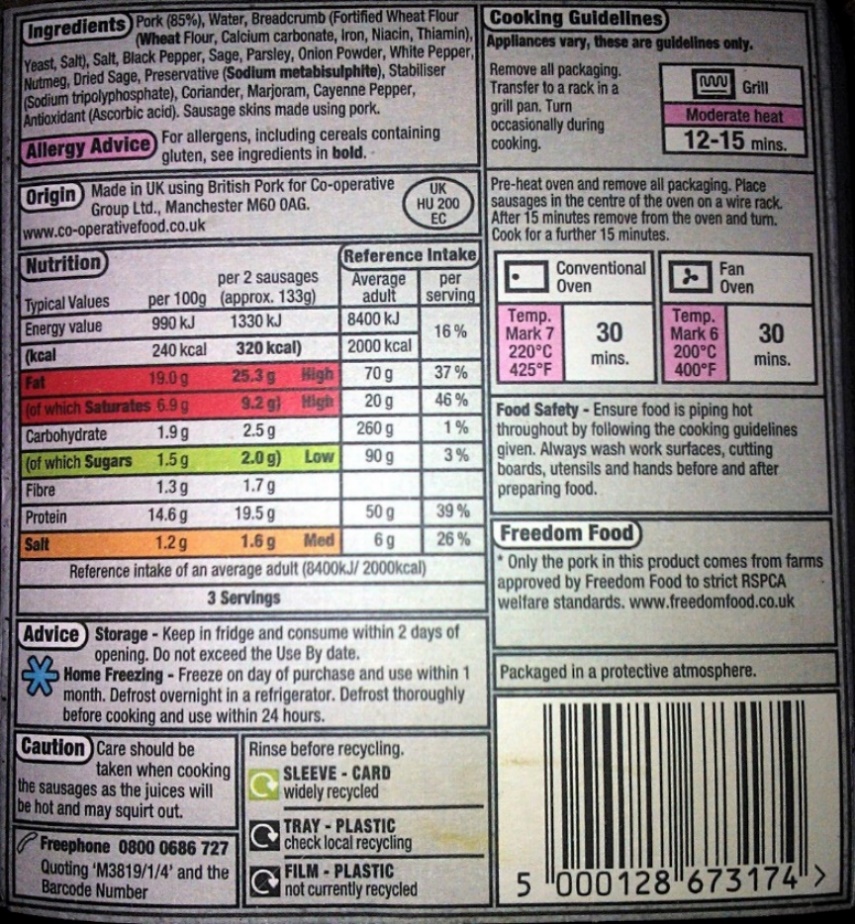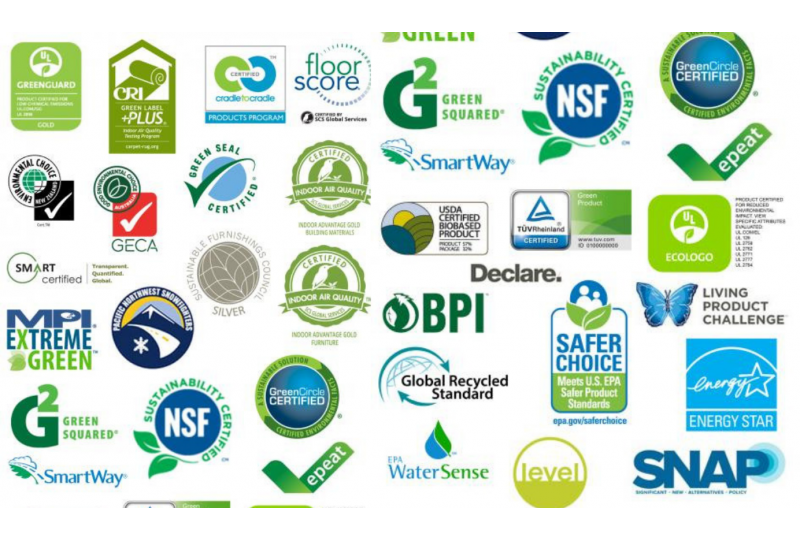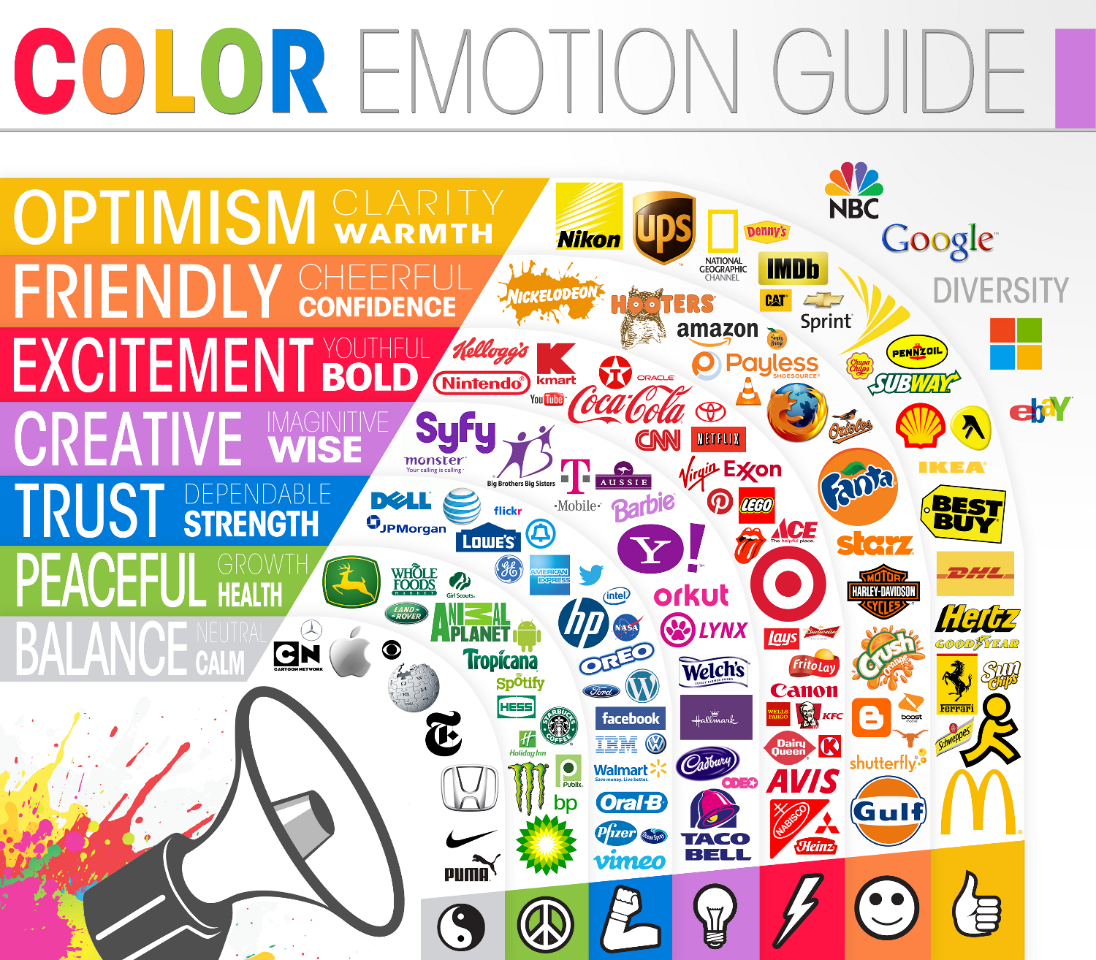Product labelling in the frame of Circular Economy
2.1 Product labelling: definitions and characteristics
Product labelling (PL) is the most direct mean of communication for manufacturers to provide consumers or other users with vital information, enabling product identification. It’s a general term referring to printed information that is bonded to the product to identify it, or to a container to identify its contents. It can be a piece of material or the information directly written on a product.
Product labels have several functions:
- to provide essential, often required, information about the product, its contents and its use,
- to promote the recognition of product,
- to advertise the product and to assist promotion of products,
- to help classify or grade the product according to different categories in the market,
- to ensure the compliance with the law.
Generally, the product label includes product name, characteristics, instructions for use, graphics and logos, certification marking, safety instructions, storage conditions and disposal information. A good product label must:
- provide basic information: brand name, price, standard certification, expiry date for food products, manufacturer’s name and address,
- provide details of the content or ingredients, weight, volume, measurements, etc.,
- include instructions for use, if necessary,
- include warnings and contraindications, if applicable,
- be visible and easy to read.
A critical purpose of PL is to inform about different characteristics of the product, in order to protect the consumer’s health and interest. A well labelled product significantly decreases the liability of the manufacturer. So, it is in the best interests of both consumers and manufacturers that PL is complying with the applicable standards and regulations. In any case, product labels must comply with the legal obligations.
There are two main types of product labelling:
- mandatory – certain information related to products such as food, drugs, toys, etc. must be included by law,
- voluntary – information included as the manufacturer feels it may be useful for the consumer (for example “Suitable for vegans”) and it can be, in some cases, partly regulated.

Source: https://commons.wikimedia.org
2.2 The importance of product labelling
PL is an important part of all products, being a very effective communication mean and a key feature in marketing. It plays a vital role in increasing brand visibility and brand loyalty, and can help consumers to decide on buying the product. The product label is also the first point of communication after the sale, helping customers use, handle and dispose the products correctly.
PL has important effects on many aspects of a business. Proper labelling is required for product efficient handling throughout the entire supply chain, for streamlining business activities and for simplifying business-to-business trade. Using common standards to identify and track products and complying with relevant product safety requirements are prerequisites for a good cooperation and effective exchange of product information between trading partners.
A correct PL provides traceability for products throughout the supply chain and improves the compliance management of recalled products. These can be traced back from the customers through the manufacturing, shipment, delivery, and raw material purchasing process such that the supplies of the original raw material can be identified. Traceability is useful for improving quality and recognizing the source of a problem or other issue.
Proper PL ensures compliance with relevant laws, policies, and regulations. If the information provided on the product label is not sufficient or not in compliance with the law, the manufacturer can face serious consequences in terms of reputation, penalties, costs, etc. Missing or wrong information, safety instructions or use instructions can put customers in danger and have a serious impact on the future of the manufacturer.
Start-up companies must be extremely careful in order to compensate their limited experience and little resources. Any of their products must be appropriately labelled. A good practice is to collaborate with experts in PL and other relevant fields.
Products’ labels can include additional information which act as a differentiation factor in order to gain a competitive advantage (e.g., compliance with globally recognised certification markings or promotional details).
2.3 The role of product labelling in the circular economy
PL can facilitate the transition to the circular economy. In addition to educating the consumers and companies, it plays an important role in encouraging more sustainable use of resources, increased recycling and reuse, energy savings, etc.
The European Commission has adopted the new Circular Economy Action Plan in March 2020, one of the main building blocks of the European Green Deal, Europe’s agenda for sustainable growth. It is an ambitious plan to help European businesses and consumers in the transition to a circular economy and announces initiatives along the entire life cycle of products. PL is one of the methods that will be used in order to reach the EU Green Deal’s objectives [1].
The EU actions will bring out maximum value and use of all raw materials, products and waste, promoting energy savings and reducing greenhouse gas emissions. Eco-labels for products, such as EU Ecolabel, are very helpful in the achievement of these objectives. They can give consumers the guarantee that products comply with environmental quality requirements.
According to a study [2] conducted on 800 respondents in the United Kingdom, more “circular” products are almost always preferred over products with otherwise identical attributes. It was shown that applying a label indicating a level of circularity on the products like mobile phones and robot vacuum cleaners could be a profitable strategy for manufacturers.
Labelling could increase customer confidence of circular products and provide a competitive advantage for companies. In addition, some studies [3] suggest that certain customers are willing to pay more for products with labels signalling social and environmental benefits. However, companies and start-uppers shall be aware about other aspects that may negatively affect their business:
- such a labelling system could increase the costs for company [4],
- customers are willing to pay relatively less for reused, refurbished, or recycled products [5],
- shifting production toward more circular products can involve substantial uncertainties, including profit loss [6].

Source: https://ec.europa.eu/environment/ecolabel
2.4 Product labelling schemes for the circular economy
Environmental labels and information schemes (ELIS) have been used since the 1970s in various scopes, sizes and natures. Today, there are a large number of ecolabels, claims, declarations and other modes of transmitting information on the environmental characteristics of products [7]. More than 455 eco-label programs in 199 countries and 25 industry sectors are included in Ecolabel Index directory [8].
The International Organization for Standardization (ISO) has created standards for labelling practices dealing with environmental labels and declarations. ISO separates environmental labelling schemes into three types [9]:
- Type I (ISO 14024) is the standard for ecolabels, defined as voluntary labelling schemes that differentiate some of the best performing products and services according to multiple criteria, which are based on transparent standards for environmental preferability. A qualified organization verifies and awards a license that authorizes the use of ecolabel on products.
- Type II (ISO 14021) labels are claims based on self-declarations by manufacturers or retailers, that describe a product or service following general guiding principles. The claims have to be verifiable, and use accurate and non-misleading information. ISO 14021 provides guidance for proper use of symbols and terms [10].
- Type III (ISO/TR 14025) focuses on environmental declarations, providing quantified product information based on life cycle impacts. The declarations must be based on procedures and results from a quantified life cycle assessment compliant with ISO 14040 standards.
However, there are many ELIS that are not covered by these three types. Some very popular environmental labelling schemes include third-party audit, but are not based on life-cycle or multi-criteria (e.g., organic certified products and the energy star label). Also excluded from this typology are third-party audited quantitative reporting schemes that are not life-cycle based [7].
Nowadays there are ELIS for almost any kind of products, for services and even for buildings.

Source: https://hellotera.com/
2.5 The customers’ response to product labelling
As already discussed, PL can have a great impact on customers, on multiple levels.
Currently, as climate change is an increasingly discussed topic in the media and its effects become more evident, there is an increase in the demand for products that customers perceive to be environmentally friendly. One way to communicate this environmentally friendliness is through environmental labels (also known as eco-labels or green labels). These provide information about a product in terms of its overall environmental benefits, such as the packaging recyclability or the absence of harmful ingredients, and can positively influence consumer choices. Thanks to transparent ecological criteria, consumers can differentiate products, compare them in terms of sustainability and make conscious choices. Consequently, the demand for eco-labelled products is increasing and this is a fact that start-ups and companies should take into account.
Many consumers are interested and willing to pay a premium for sustainability-related characteristics and they do purchase such products. Environmental labels are considered important for achieving a purchase outcome and are seen as a central aspect that will influence the purchasing patterns of consumers. They act as a guide for consumers to choose environmentally friendly products so companies can use this to characterize their products, position them and communicate an environmentally friendly message.
There was a significant change in sustainability consumption in the last years. Some studies reveal that the consumers’ willingness to pay more for eco-labelled products is related to their confidence in the organisation which certifies the label, their levels of education and environmental involvement, and the type of additional information provided. These are some of the parameters that a start-up should consider in its strategy for PL.
Today is a great time to be a “green” start-up, one that acts in a way which minimizes damage to the environment. With a proper PL, a positive customer response to the company’s offer can be easily secured.

Photo by Melanie Lim on Unsplash
2.6 General rules for products labelling
Product labelling is the written information provided on the packages, and depends on the relevant national and international requirements. It must comply with some mandatory rules, which may vary from country to country and for different types of products. In addition, the manufacturer may find desirably to use some voluntary labelling, which may be also regulated.
Each product must be labelled taking into account the specific requirements for the market where it is sold. However, some general rules to be followed when designing a product label can be identified:
- product identity must be stated,
- net weight must be declared,
- the list ingredients used in the end product must be included,
- safety instructions must be provided,
- adequate information regarding the manufacturer and its contact details must be provided,
- certification marking, if required, must be displayed,
- brand logo should be included,
- the information provided shall not be false, misleading or deceptive.
Depending on the type of product and of the country where it is put on the market, product labelling may also need to comply with other rules, such as the provision of:
- directions of use,
- appropriate warnings,
- the label easy to read and visible,
- a list of the allergens contained by the product,
- nutrition facts,
- country of origin,
- the date of minimum durability,
- any special conditions for keeping or use,
- safety information for potentially dangerous products.
There are special rules for some products, such as food, toys or medicine.
It is the responsibility of the manufacturer to ensure that the product label comply with the legal requirements and offers all the information needed by the customers.
2.7 Guidelines for effective product labelling
Effective product labelling is not just about providing all the technical and legal requirements on the packaging, but is also about giving consumers the confidence to choose and use the product correctly. In addition, PL can be a differentiation factor, could influence the consumer’s perception of the brand and even affect the purchasing decision.
The effectiveness of a product label design can be improved by following some guidelines:
- use the psychology of colour[11],
- choose the most appropriate label shape for the product,
- use creative barcodes or QR-codes,
- carefully select the label material and finish,
- include contact information,
- use the product label in conjunction with social media.
Using the product label in conjunction with social media is a great way to boost its effectiveness, especially for small companies and start-ups. The start-uppers should definitely consider creating a coherent marketing strategy that enables synergy between their products labelling and the appropriate social media platforms.
Product labelling can be made more effective by taking advantage on the new technologies, such as Cloud Computing and the Internet of Things, that ensures better communication and connection of the different actors of the supply chain, improving the traceability and security. Other technologies, such as Augmented Reality, allow to increase the information contained in the label and to improve the communication with customers.
Launching a new product can be a difficult time for a start-up, with many critical activities to be completed and involves significant risks. Product labelling is one of the important things to be taken into consideration during the product design phase.

Source: https://thelogocompany.net

Source: www.ludoreng.com

Source: www.onlinelabels.com/
2.8 EU product labelling requirements
Mandatory labels
Many products can be sold in the EU only if they bear the CE marking, no matter where they were manufactured. CE marking indicates that a product has been evaluated by the manufacturer and considered to meet EU requirements for safety, health and environmental protection. It is only obligatory for products for which EU specifications exist and require the affixing of CE marking. Some products are subject to several EU requirements at the same time and the manufacturer must make sure that its product complies with all the relevant requirements. Plenty of information about CE marking is available on EU websites [12].
For certain product groups, an Energy Label must be clearly displayed on each product. Energy labels rank appliances and other product categories on a scale from A to G according to how much energy they consume.
Most electrical and electronic equipment sold in the EU must bear WEEE label which indicates that the product must be sent to separate collection facilities for recovery and recycling.
Most footwear sold in the EU must bear a Footwear Label that informs customers what they are made of.
Clothes and other textile products sold in the EU are required to carry a Textile Label. This must clearly identify the composition of all textile fibres used and indicate any non-textile parts of animal origin.
Voluntary labels
The EU Ecolabel can be affixed to various products that are environmentally friendly and respect rigorous ecological criteria.
The e-mark shows that a product complies with EU rules regarding the indication of the volume or weight and the measuring methods that must be used by companies selling pre-packaged products.
It is crucial for the start-uppers to check if any mandatory label is applicable to the products they intend to sell in EU and to observe the applicable rules.

Source: https://ec.europa.eu

Source: https://europa.eu

Source: https://ec.europa.eu
2.9 Labelling requirements i other countries
International regulations are becoming increasingly complex, more and more countries have difficult labelling requirements that are specific to their country. Each country has its own product labelling rules specifying key requirements, such as what language a label is written in, and what product components need to be listed. The general rules already described in this module are usually applicable.
Some labelling requirements apply to all product categories or to a wide range of products. For example, all products sold in the USA must be labelled with the country of origin (i.e., Made in Romania) and all products sold in countries like China and Brazil must be marked in the national language. Other labelling requirements apply to specific products, such as toys, electronics and textiles, and each of these has its own set of labelling requirements.
As the incorrectly labelled products cannot be legally placed on the market, it is crucial that the manufacturer observe all the PL requirements of the country where its product is going to be sold. For example, the USA customs have the right to return cargo that are not properly labelled.
Many products imported to USA, Canada, Australia and New Zealand are required to comply with certain labelling requirements. Among these, we can mention:
- toys and children’s products,
- clothing, textile and accessories,
- food,
- pharmaceutical drugs, etc.
In Japan, generally, labelling for most imported products is not required at the customs clearance stage, but at the point of sale. Many products imported to China must receive a China Compulsory Certification (CCC) marking before sale.
The easiest way for a start-up to ensure that a given product meets all applicable requirements in a certain country and is properly labelled, is to work with a local agent or importer.

 Deutsch
Deutsch Español
Español Italiano
Italiano Nederlands
Nederlands Polski
Polski Română
Română